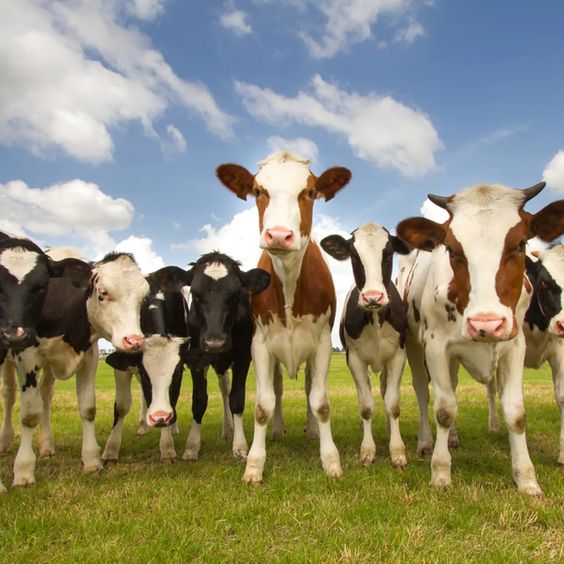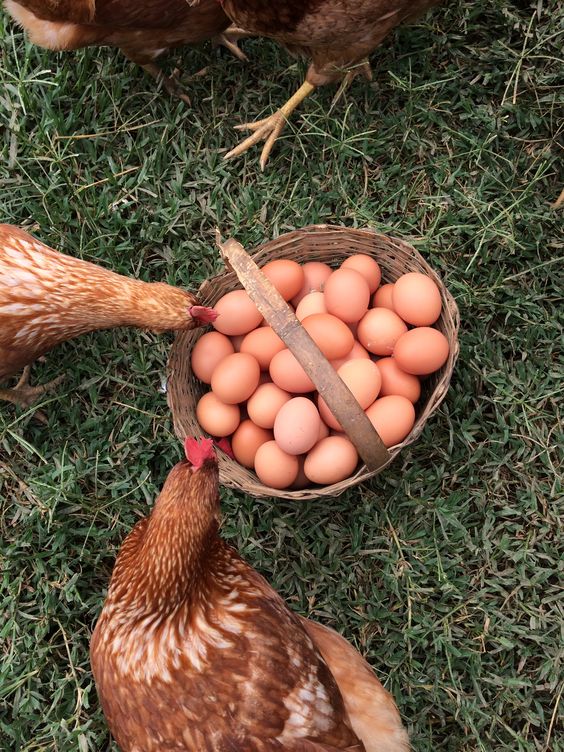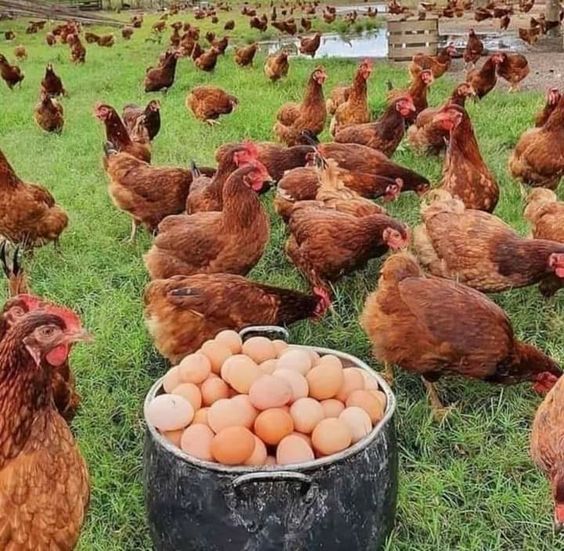Prevention of Cattle Diseases: Essential Strategies for a Healthy Herd
Prevention of Cattle Diseases are a vital component of agriculture, providing meat, milk, and other products essential for human consumption. However, they are susceptible to various diseases that can significantly impact their health, productivity, and the economic viability of farming operations. This article will explore the prevention of cattle diseases, highlighting the importance of proactive measures, benefits, objectives, and practical strategies for maintaining a healthy herd.
Prevention of Cattle Diseases,The health of cattle is paramount for successful livestock management. Diseases can lead to decreased productivity, increased veterinary costs, and even the loss of animals. Therefore, prevention is not only a matter of animal welfare but also an economic necessity. Effective disease prevention strategies encompass a combination of good management practices, biosecurity measures, and vaccination protocols designed to minimize the risk of disease outbreaks.
Objectives of Prevention of Cattle Diseases
Prevention of Cattle Diseases,The primary objectives of cattle disease prevention are crucial for both animal welfare and agricultural sustainability. These objectives can be expanded as follows:
- Maintaining Animal Health: The foremost goal of cattle disease prevention is to ensure that cattle remain healthy and free from diseases. Healthy animals exhibit better growth rates and reproductive performance, resulting in higher productivity levels. This objective encompasses regular health monitoring, vaccinations, and nutritional management, all aimed at fostering a robust immune system in cattle.
- Maximizing Productivity: Preventing diseases is essential for maintaining optimal growth rates, milk production, and overall herd performance. Healthy cattle can achieve their genetic potential, leading to increased meat and milk yields. This, in turn, allows farmers to meet market demands effectively and contributes to food security.
- Reducing Economic Losses: Disease outbreaks can lead to significant economic losses for farmers due to the costs associated with treatment, culling, and lost productivity. By implementing effective prevention strategies, farmers can minimize these risks and enhance their profitability. Early intervention and disease management practices are critical in mitigating potential financial impacts.
- Enhancing Food Safety: Healthy cattle are integral to producing safe food products, which is crucial for public health and consumer confidence. Preventing diseases reduces the risk of foodborne pathogens and contaminants, thereby ensuring that meat and dairy products are safe for consumption. This objective aligns with consumer expectations for high-quality food products.
- Improving Biosecurity: Effective disease prevention measures enhance biosecurity on farms, protecting not only the herd but also the surrounding agricultural community. By minimizing the risk of disease transmission, farmers can safeguard their operations and contribute to the overall health of the livestock industry. This includes implementing strict hygiene protocols, monitoring animal movements, and educating farm workers about disease prevention practices.

Benefits of Disease Prevention
Prevention of Cattle Diseases,Implementing disease prevention strategies in cattle management offers a multitude of benefits that extend beyond the immediate health of the animals. These advantages positively impact farmers, consumers, and the broader agricultural industry:
- Reduced Mortality Rates: One of the most significant benefits of effective disease prevention is the reduction in mortality rates among cattle. By proactively managing health risks, farmers can ensure a more stable and resilient herd. This not only preserves the investment made in livestock but also contributes to maintaining a consistent supply of meat and dairy products in the market.
- Lower Veterinary Costs: Preventative measures are typically more cost-effective than treatment after diseases occur. Regular vaccinations, health screenings, and biosecurity protocols may require initial investment but lead to significant savings over time. By minimizing the need for veterinary interventions due to disease outbreaks, farmers can allocate their resources more efficiently and improve their bottom line.
- Improved Animal Welfare: Healthy cattle experience less suffering and discomfort, aligning with ethical farming practices. Disease prevention strategies contribute to overall animal welfare, allowing cattle to live healthier, more productive lives. This focus on welfare not only benefits the animals but also enhances the reputation of the farming operation among consumers who prioritize humane treatment of livestock.
- Enhanced Marketability: Healthy cattle are more attractive to buyers, improving market opportunities. Buyers often seek livestock that demonstrate good health and productivity potential. As a result, implementing disease prevention strategies can enhance the market value of cattle and lead to better sales outcomes for farmers.
- Sustainable Farming Practices: Disease prevention supports sustainable agriculture by reducing reliance on antibiotics and other medical interventions, which can contribute to antimicrobial resistance. By adopting preventative measures, farmers can minimize the environmental impact of livestock farming while promoting a healthier ecosystem. This aligns with consumer demand for sustainable and responsibly raised food products.
Practical Ideas for Disease Prevention
Prevention of Cattle Diseases To effectively prevent cattle diseases, farmers can adopt several practical strategies that enhance the overall health and productivity of their herds:
- Regular Health Checks: Conducting routine health assessments is essential for identifying early signs of illness. This includes monitoring vital signs, such as temperature, heart rate, and respiration, as well as observing behavior and physical condition. By maintaining a close watch on the cattle, farmers can catch potential health issues before they escalate, enabling prompt intervention and treatment.
- Nutrition Management: Ensuring that cattle receive a balanced diet tailored to their specific nutritional needs is crucial. Proper nutrition strengthens the immune system, making cattle more resilient against diseases. Farmers should focus on providing high-quality feed, including essential vitamins and minerals, to promote optimal growth and overall health. Regularly assessing the nutritional requirements based on factors like age, weight, and production stage can further enhance cattle health.
- Clean Water Supply: Access to clean, fresh water at all times is vital for cattle health. Contaminated water can lead to various health issues, including gastrointestinal infections and dehydration. Farmers should regularly check and clean water sources to ensure they remain uncontaminated, preventing potential disease outbreaks caused by polluted water.
- Pasture Management: Implementing effective pasture management practices, such as rotating pastures, can help prevent overgrazing and reduce parasite loads. Rotating grazing areas allows grass to regenerate, minimizing the risk of soil erosion and maintaining healthy pastures. Additionally, farmers should regularly clean pastures to remove debris and toxic plants, further safeguarding cattle from health hazards.
- Biosecurity Measures: Strong biosecurity protocols are essential for protecting cattle from disease introduction and spread. Limiting access to the farm, disinfecting equipment, and ensuring that visitors follow hygiene protocols are critical steps. Quarantining new animals for a period before introducing them to the herd helps to prevent potential disease transmission, allowing time for health assessments and vaccinations.
- Vaccination Programs: Collaborating with a veterinarian to develop a comprehensive vaccination schedule tailored to the herd’s specific needs and local disease risks is crucial. Regular vaccinations not only protect individual animals but also contribute to herd immunity, reducing the overall prevalence of diseases within the farming operation.

Advantages of a Preventive Approach
Prevention of Cattle Diseases,Adopting a preventive approach to cattle disease management offers numerous advantages that positively impact both individual farms and the broader agricultural community:
- Cost-Effectiveness: Prevention of Cattle Diseases,Investing in preventive measures is often more economical than responding to disease outbreaks. The costs associated with treatment, veterinary care, and lost productivity can add up quickly during an outbreak. By focusing on prevention through regular health checks, vaccinations, and proper nutrition, farmers can significantly reduce these expenses. Over time, the savings generated by preventing disease outbreaks can outweigh the initial investments in preventive strategies, leading to improved profitability.
- Enhanced Herd Longevity: Prevention of Cattle Diseases,Healthy cattle typically enjoy longer lives, which directly contributes to greater productivity and profitability over time. Cattle that remain disease-free can continue to produce milk, grow to market weight, and reproduce effectively. This increased longevity allows farmers to maximize their investments in breeding stock and improves the overall sustainability of their operations.
- Better Quality Products: Prevention of Cattle Diseases,Animals in good health produce higher quality meat and milk. Healthy cattle exhibit improved growth rates, better feed conversion ratios, and enhanced reproductive performance, all of which lead to superior products. The market often rewards high-quality products with better prices, enabling farmers to achieve higher profit margins. In addition, consumers are increasingly seeking products from healthy, well-managed animals, making quality a competitive advantage in the marketplace.
- Community Health: Prevention of Cattle Diseases,Effective disease prevention strategies contribute not only to individual farm health but also to the well-being of the broader agricultural community. By reducing the risk of disease transmission between farms, preventive approaches help maintain herd health on a regional scale. This interconnectedness is vital, as outbreaks in one farm can quickly spread to neighboring operations, leading to widespread economic and health consequences. Therefore, a preventive approach enhances overall biosecurity and fosters a healthier agricultural ecosystem.
- Improved Animal Welfare: Prevention of Cattle Diseases,Preventive measures lead to better animal welfare by reducing suffering and stress associated with illness. Healthy animals experience a higher quality of life, which aligns with ethical farming practices and meets consumer demand for humane treatment of livestock.
Comprehensive Strategies for Disease Prevention
1. Maintain Biosecurity Measures
Prevention of Cattle Diseases,Enforce strict biosecurity protocols to limit the introduction and spread of diseases. This includes:
- Controlling access to livestock areas.
- Using disinfectants on equipment and footwear.
- Washing hands before and after interacting with cattle.
Implementing these measures helps create a barrier against pathogens that can enter the farm environment.
2. Optimize Nutrition
Prevention of Cattle Diseases,Prevention of Cattle Diseases a balanced diet tailored to the specific needs of the herd. Proper nutrition boosts immune health and enhances overall livestock production capabilities. Key components include:
- Ensuring adequate vitamins and minerals.
- Regularly assessing the quality of feed and water.
- Consulting with a nutritionist to formulate diets that prevent nutritional deficiencies.
3. Regular Veterinary Checkups
Prevention of Cattle Diseases,Schedule routine health examinations with a veterinarian to catch any signs of illness early and prevent outbreaks. This includes:
- Annual health assessments.
- Vaccination updates based on regional disease prevalence.
- Monitoring for parasites and other health indicators.
4. Implement Effective Vaccination Protocols
Prevention of Cattle Diseases a vaccination schedule aligned with veterinary advice to protect against prevalent diseases in the region. Important vaccinations may include:
- Bovine Respiratory Disease (BRD) vaccines.
- Clostridial vaccines.
- Vaccines for reproductive diseases such as Leptospirosis.
Additional Preventive Measures
Prevention of Cattle Diseases,Beyond the primary strategies outlined, several additional practices can enhance disease prevention in cattle:
- Monitor Environmental Conditions: Ensure that cattle are kept in clean, dry, and well-ventilated areas to reduce the risk of respiratory diseases and infections.
- Control Parasites: Implement a parasite control program that includes regular deworming and monitoring for external parasites like ticks and flies.
- Pasture Management: Rotate pastures to prevent overgrazing and reduce parasite loads. Keeping pastures free from debris and toxic plants is also essential.
- Water Quality: Provide access to clean, fresh water at all times. Contaminated water sources can lead to various health issues.
- Emergency Preparedness: Develop a plan for responding to disease outbreaks, including protocols for isolation, treatment, and communication with veterinary services.

The Importance of Community and Collaboration
Prevention of Cattle Diseases,Engaging with local agricultural communities and veterinary services is essential for enhancing disease prevention efforts in cattle farming. Collaboration among farmers not only fosters a supportive network but also strengthens biosecurity measures and overall herd health. Here are several key ways in which community involvement can significantly improve disease prevention:
- Consult with Neighbors: Prevention of Cattle Diseases,Farmers should actively share information about disease outbreaks and effective management practices with their neighbors. Open communication can help identify potential risks and enable quicker responses to emerging threats. By working together, farmers can strengthen community biosecurity, as diseases are less likely to spread when neighboring farms adopt similar prevention strategies. Regular community meetings or informal gatherings can facilitate this exchange of knowledge and experiences, enhancing everyone’s understanding of effective practices.
- Participate in Local Health Programs: Prevention of Cattle Diseases,Joining agricultural associations, cooperatives, or local health programs can provide farmers with access to valuable resources and support for disease prevention. These organizations often offer educational workshops, training sessions, and access to veterinary services that can help farmers implement best practices. By collaborating within these frameworks, farmers can benefit from collective knowledge and resources, ensuring they are well-equipped to manage their cattle health effectively. Participation in local health programs can also foster a sense of community and shared responsibility for livestock welfare.
- Stay Informed: Prevention of Cattle Diseases,Keeping up-to-date with the latest research and recommendations regarding cattle health and disease management is crucial for effective prevention. Farmers should engage with veterinary professionals, extension agents, and agricultural specialists to stay informed about emerging diseases, treatment protocols, and advancements in preventive measures. This continuous learning process enables farmers to adopt evidence-based practices and make informed decisions that enhance the health of their cattle.
- Establish Emergency Response Plans: Prevention of Cattle Diseases,Collaborating with local veterinarians and neighboring farms to develop emergency response plans can be invaluable. In the event of a disease outbreak, having a well-prepared plan ensures a swift and coordinated response, minimizing the potential impact on cattle health and farm productivity.
Prevention of Cattle Diseases is essential for maintaining a healthy and productive herd. By implementing effective management practices, biosecurity measures, and vaccination protocols, farmers can significantly reduce the risk of disease outbreaks. The benefits of prevention extend beyond individual farms, contributing to the overall health of the agricultural sector and ensuring the safety of food products.






